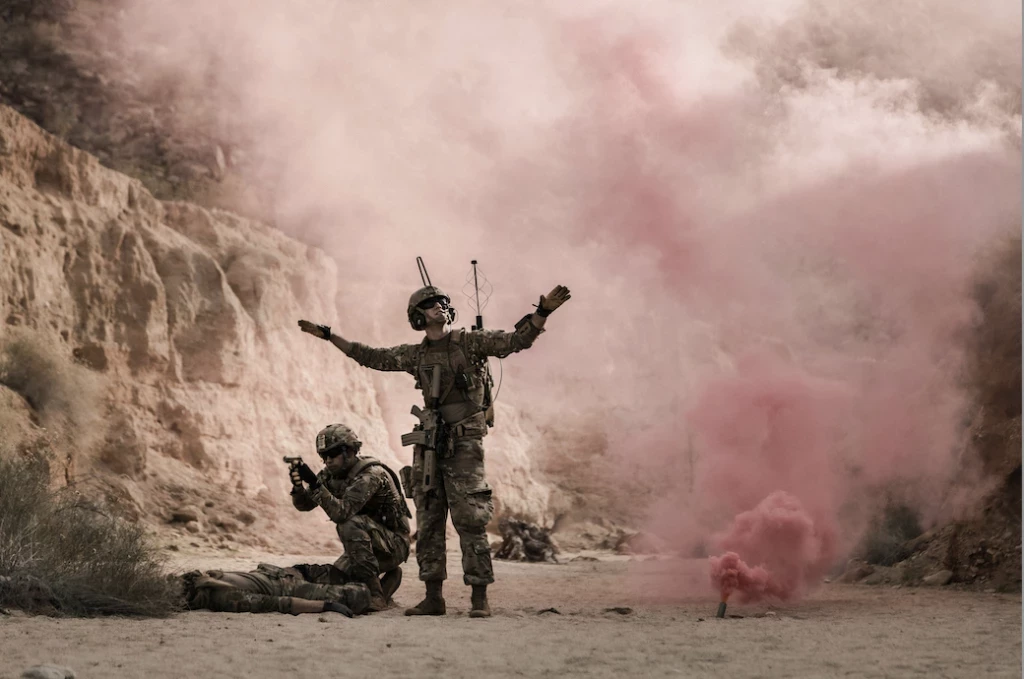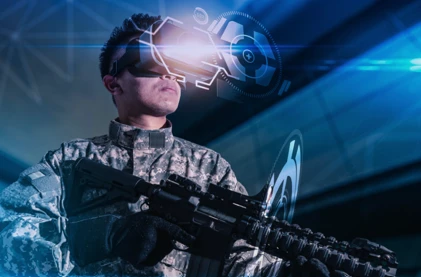Rewarding the Cowboy, Punishing the Sniper: The Training Efficacy of Computer-based Urban Combat Training Environments
Add bookmark"Rewarding the Cowboy, Punishing the Sniper: The Training Efficacy of Computer-based Urban Combat Training Environments" by Bruce Newsome and Matthew W. Lewis, was published in Defence Studies, Vol. 11, No. 1, March 2011, pp. 120-144.
How could we best use digital simulations to train soldiers? Surprisingly few people, even within the military, have assessed the utility of digital simulations for training soldiers, despite the popularity of the method.
The authors of this article begin by observing that "digital training methods have enjoyed a long honeymoon period in which their training validity has been assumed more than proven." Training efficacy is rarely validated, meaning that we rarely know for sure whether the products really are training whatever they were meant to train or are the best ways to train: "Digital games have proven commercially popular, entertaining, and engaging. Digital games are often described as the dominant art form or medium. Training that is fun is engaging, and engaged trainees tend to learn more. However, a game that is just fun is not training anything, except how to play games."
The authors admit that digital training does offer value. Digital training environments are usually less burdensome than real-world training environments and adapted commercial games can be many times cheaper than a real-world training environment (although, some purpose-built digital training games can be expensive: for instance "Full Spectrum Warrior" cost at least $7 million of mostly US public money, but the game largely failed as a training investment, although it made a lot of money for the commercial developer).
The authors found that the advantages of digital training come with disadvantages. They found anecdotal evidence for some positive training outcomes but also for plenty of negative training outcomes: "In some ways, game design and instructional design are antagonistic. Game designers are concerned to entertain and reward the user for playing, which often means unrealistic design choices, such as multiple lives and enduring user-led action. In order to speed up the game and not leave the player without interactive stimuli, games often compress time (for instance, eliminating the time delay for orders to be processed), allow perfect communication (for instance, subordinates never misinterpret orders), simplify processes (for instance, the player reloads a digital weapon with one key press on the key board), or remove "headaches" (for instance, eliminating the possibility of a weapon jam or misfire)."
In detail, the authors identified nine main advantages of digital simulations.
First, battlefields are simply cheaper to simulate digitally than in the real world.
Second, digital simulations offer scope for manipulations that no real-world could offer, such as switching walls from opaque to transparent so that trainers can see what the trainees are doing inside a building.
Third, digital simulations can simulate battlefields of immense scale, covering the whole planet if necessary.
Fourth, digital simulations can model complexities, such as a myriad of urban architectures, which would be prohibitively expensive in the real world.
Some of that complexity is urban clutter – the mess of materials, like street signs, in a city, particularly after kinetic damage - which fighters must navigate and use as cover.
Sixth, digital simulations are easy to replicate and to adapt, compared to real-world training environments.
Seventh, battle damage, weapons effects, and casualties are easy to model digitally, compared to all the practical, health-and-safety, and ethical constraints in the real world.
Eighth, automated after-action reviews (at least replay tools) are easy to add to digital simulations.
Finally, human populations are easy to add to digital environments, when they would be very expensive to employ in the real world (although computer-controlled avatars do not behave realistically).
The authors identified 12 main disadvantages, which are rarely admitted comprehensively. For a start, and most importantly, digital simulations cannot model human behaviour well; thus, computer-controlled enemies do not behave realistically – they do not adapt well to the tactics employed by real human users and they rarely display real psychological frailties; avatars can employ unrealistic biolocomotive skills, such as changing direction after jumping into the air, or lack real biolocomotive skills, such as squeezing into tight spaces.
Users might realize the unrealism, but still (at least subconsciously) develop unrealistic expectations of enemy behaviour.
Some games might teach soldiers to follow linear routes through battlefields and not to adapt to the environment, if only because many games create false boundaries in the simulated environment, so that only one route might be offered to the avatar, when in the real world the user might prefer to outflank the enemy.
Third, games encourage users to follow their own path, reacting to personal threats and not employing groups of soldiers or units realistically, if only because many games do not offer any way for the user to control anything but a first-person avatar.
Fourth, games encourage aggressive and risky behaviour, if only because the game offers a user multiple "lives" or prevent subtle uses of cover.
Fifth, many games prevent avatars from entering buildings, so soldiers learn to race through open streets, without looking for good cover or elevated firing positions within buildings.
Sixth, games rarely model materials with different prospects as cover. Thus, users could learn that a single-brick wall offers as much cover from enemy bullets as a tank.
Similarly, games often model ballistic trajectories unrealistically, so a user might learn that bullets simply strike walls and disappear, rather than potentially change course strike the user’s avatar nearby, outside of the enemy’s line of sight.
Games often model weapon effects unrealistically – for instance, bullets might perforate a tank, while anti-tank weapons might burst with threats to only nearby pedestrians. Game designers like to design games with "balanced"
capabilities on both sides; such games are often used by military trainers without changing the core dynamics.
Digital simulations cannot model real-world communications skills in all their subtleties. Most games do not allow users to communicate through the game at all. If they communicate in the real world, the communications are unrealistically easy, often by talking to users sitting at the next computer or through a headset, without interruption by battlefield noises or dust, across distance, around corners.
Computer terminals distort the user’s perception, for instance, by offering a limited view of the battlefield, as constrained by the computer screen’s size, when a real soldier needs to develop peripheral vision.
Users might develop "inaccurate recognition priming," such as recognizing enemies by the repeated simplistic ways in which they are modelled (such as a notional insurgent avatar’s red scarf).
Finally, digital simulations rarely offer any sort of bio-locomotive activity, so users would not learn how (athletically) to manipulate a door, hold a weapon in the ready position, enter a room, and scan for enemies, all at the same time.
The authors conclude that real-world training is preferred for training low-echelon, dismounted, urban fighting. Digital training is most appropriate for training high-echelon, mounted, non-urban fighting and non-kinetic skills.
Trainers should favour one method other the over depending on the desired skill outcomes, while blending the two methods so that the advantages of each can be maximized.






















